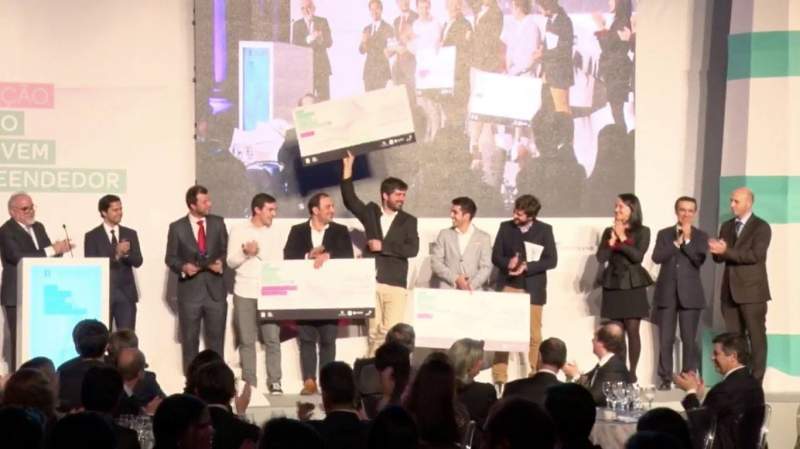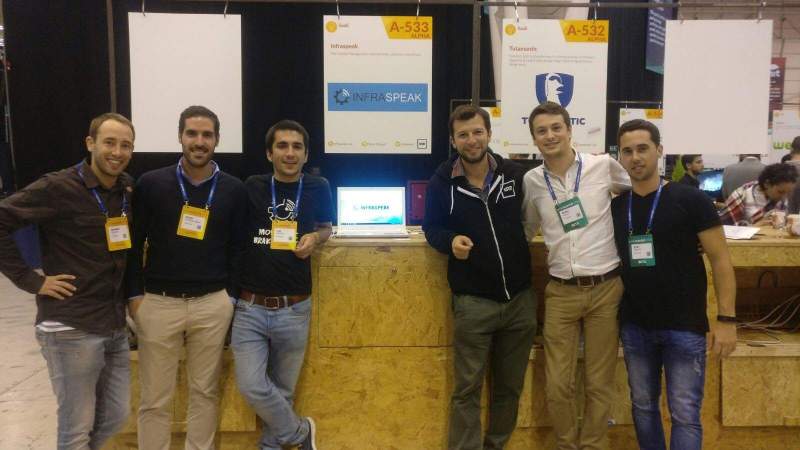
What is it?
Infraspeak is a software solution for facility managers and technical assistants.
It is available online here.
More than a maintenance software, Infraspeak is a technical operations platform that totally adapts to the client and his needs.
Story to explain Infraspeak
To better illustrate what Infraspeak can do, especially for people outside the facility management or technical assistance world, I usually tell a story.
I’m just going to go ahead and write it down here:
Usually, what people outside the maintenance world don’t know is that the maintenance world is huge. Every big building (hotels, office buildings, shopping centers, stadiums, airports, etc) and every company with a lot of distributed small spaces like stores (every retailer, every shoe shop brand, every travel agency with many stores, etc) they all need a lot of maintenance to operate. Even for only a hotel, sometimes the maintenance crew is over 10 people full-time with different schedules to be available 24/7. Maintenance usually represents millions of euros in the annal budget of most of these examples I just gave.
Every day, these maintenance crews have a lot of things to do. When there is a failure, anywhere in these big buildings, the maintenance crews are appointed to fix it ASAP. It’s called corrective maintenance, when you go to fix an already existing problem. But usually, to avoid big surprises and big expenses replacing damaged machines, these maintenance crews preform preventive maintenance, which consist in scheduled interventions where several measurements are made and some part substitutions may happen.
Infraspeak comes in here. Infraspeak focuses on the day to day operations done by these maintenance crews and simplifies it drastically.
With Infraspeak a technician just has to login on the app on his phone and touch one of the NFC tags previously installed in all the equipments that require maintenance. After he touches the NFC tag, the equipment loads in the app and all the maintenance tasks will appear for the technician to preform. He just has to introduce the readings and the task is completed! Now reports are automatically sent to the headquarters and the client. The technician can even sign the report with his finger.
This simplifies and speeds up drastically the usual paper reports that needed to be filled up by hand and many times send by mail to the client.
The other big advantage of Infraspeak is that because of the NFC tags, we guarantee that the technician actually went to the building to preform the required maintenance task.
For the managers, they suddenly have access to all the information in real time, organized in easy to manage indicators. All reports can also be generated and sent from the back-office.
Maintenance is usually forgotten by tech companies because it is not as “sexy” as some other fields for startups, so it is a rather under-developed area in terms of startup investment. We used this as an opportunity and thrived.
My path at Infraspeak
I entered Infraspeak in its early days as a company. Although Luís, our co-founder, had been working to create Infraspeak for some years, it only became a company in the end of 2015. I joined up in April of 2016. I was the second employee, and we were still not invested at the time. The company managed to bootstrap and make money from new sales each month allowing for us to regularly employ new people from that moment on.
I entered Infraspeak with the objective to lead the company in developing its mobile app, which was essential for the business.
I am responsible for the development of all the mobile applications of the company:
- Infraspeak mobile app (main application) - aimed for technicians to use it on their daily operations
- Infraspeak direct app - aimed for non-maintenance technicians to be able to report failures to the maintenance team
- Infraspeak operations app - aimed for stationary technicians that perform maintenance tasks on the same equipments everyday
First technical challenges
When I got in, an app already existed. This app had been developed by Luís for the past years. It had all the core features already in it. But it was developed over time, while Luís was also learning about Android Development. My first challenge when I got in Infraspeak was to start with this legacy code, convert it to better and more recent best practices, add offline capabilities to the main tasks performed by the app, while keeping the regular releases of new features. We were moving fast, but the challenge was amazing and the team was small but very motivated.
We managed to launch an app version quite fast with a simple offline workflow, where all the tasks that were allowed to be performed offline would wait in a priority queue of offline jobs until the app would have access to the internet to sync all these offline tasks. This was all done without bothering the technician with any offline details, meaning he could operate as he usually did when he had internet, not even noticing he was offline. The tasks would sync as soon as the phone had connectivity again.
This was a major breakthrough as it allowed technicians that worked in basements to do their jobs without any issue.
Clients define our roadmap
We worked in cycles of 3 weeks, we had a development sprint of 2 weeks and an inter-sprint of one week.
This inter-sprint was a creation of ours inspired by the Google Ventures Design Sprint but then again, completely altered for our needs. In this inter-sprint we would re-test everything, do some minor fixes, release the app, plan for the next sprint and it was the week where all the teams interacted with each other.
As part of the development team, in the inter-sprint we had a designated time to speak with:
- the customer success team to understand which were the main necessities of our current clients,
- the sales team to know which were the main requested features that would convert sales leads into clients
- the communication team do give them all the details of the newly developed features for them to communicate
- the development team (between ourselves) to identify development needs that could not be communicated but still had to be done at some point
After these interactions between the teams, we negotiated what would be communicated in the next sprint. Marketing defined what we built each sprint, taking in consideration all the voices. But in the end, we always developed focusing on the headlines and minor improvements that were communicable to our current or future clients.
Caixa Capital & 500 startups investment
Our communication strategy and product development strategy according to clients real needs worked out really well for us and we were selling really fast and to great names (SIEMENS, Intercontinental, Crown Plaza, Savoy, Four Seasons).
Besides this, with each big client, a lot of new leads would emerge because of our NFC strategy - all the tags had our name and it was easy for technical assistance providers that visited one of our new clients to wonder what Infraspeak was and bite the bait. In a way we had a bootstrapping strategy that was financing our early team with each new client we made.
We were not looking to be invested.
In LIS (Lisbon Investment Summit) we managed to greatly showcase our success, in such a way that we convinced one of the co-founders of 500 Startups (that was present) to invite us to participate in their 18th batch in San Francisco (which was going to happen 15 days from the moment we were invited). Although we were not looking for investment, we couldn’t say no to such a great opportunity and got invested by Caixa Capital and 500 startups for a pre-seed investment and went to San Francisco for 4 months to participate in their acceleration program, which was a great learning opportunity for us.

Team spirit

The team is clearly the best asset of Infraspeak. Infraspeak managed for 2 years in a row to overcome more than 200% in sales growth and evolved from a 3 people team into a 15+ team in those 2 years.
Infraspeak won many award like the Young Entrepreneur of the Year award, the top 25 companies from Portugal (we got a free stand in WebSummit thanks to this award) and many company acceleration program awards (programs that selected companied to become providers of a certain brand).

Infraspeak has a tradition that motivated the whole team to sell more. For each new client we would drink a different beer. This evolved into a ritual called Beer Celebration where we got to rate each of the beers we drank for each client with Infraspeak’s app itself. After the ritual was over we would save the beer in our beer showcase.

15 minutes of fame (much more than 15 minutes actually  )
)
Thanks to getting invested and participating the 500 Startups acceleration program, along with all the big client names and all the awards we won, Infraspeak got a lot of media coverage. Some examples:
We even got mentioned on the TechCrunch favorite list of the 18th batch of 500 Startups:
Technical Solution
On the technical side, Infraspeak is constituted by a back-end a front-end, a main mobile app used for technicians and two support mobile apps: direct app and operations app.
Infraspeak Back-Office and Back-End
The back-end is built using PHP (Laravel) and between several other technologies Vue.js is used to built the back-office interface.

Infraspeak Mobile App
The main mobile app is a Native Android app, primarily built with Java. Of the technology stack I could give emphasis to:
- DBFlow - the ORM used,
- EventBus - to fire events making it easy to communicate between background threads and the UI thread
- Android Priority Job Queue - used to simplify background jobs and the order through which they should be executed
- Retrofit - used to make requests to our API
This application is built following the MVP architecture. At some point we used MVVM architecture to simplify the handling of the models in some RecyclerViews.

Infraspeak Direct App
This app was built using the ionic framework, which is a framework based on JavaScript and Angular that has many components that look like native mobile components. We then encapsulated this web application into an app for iOS and Android using Cordova.

Infraspeak Operations App
This app was built using the Quasar Framework, which is a View.js based framework focused on creating mobile applications, much like ionic but this time based on View.js.

